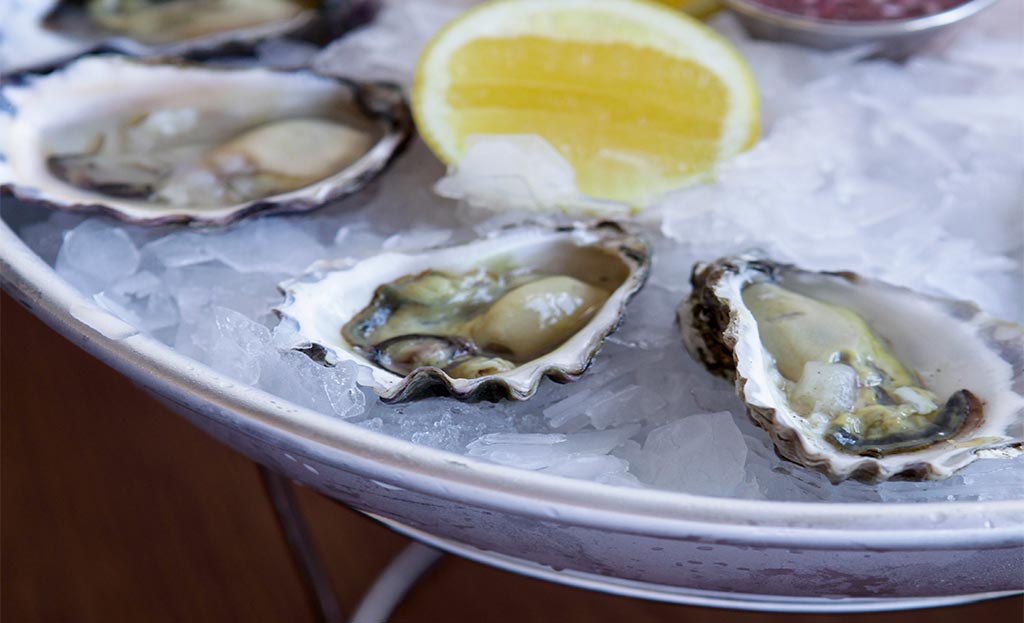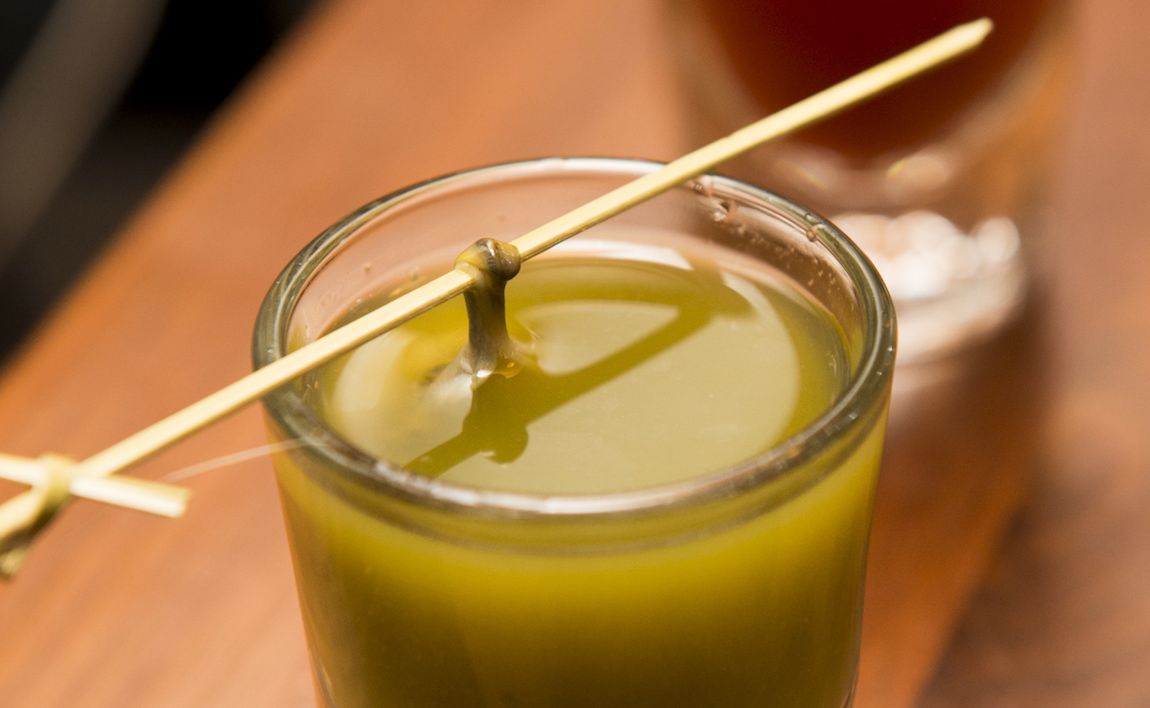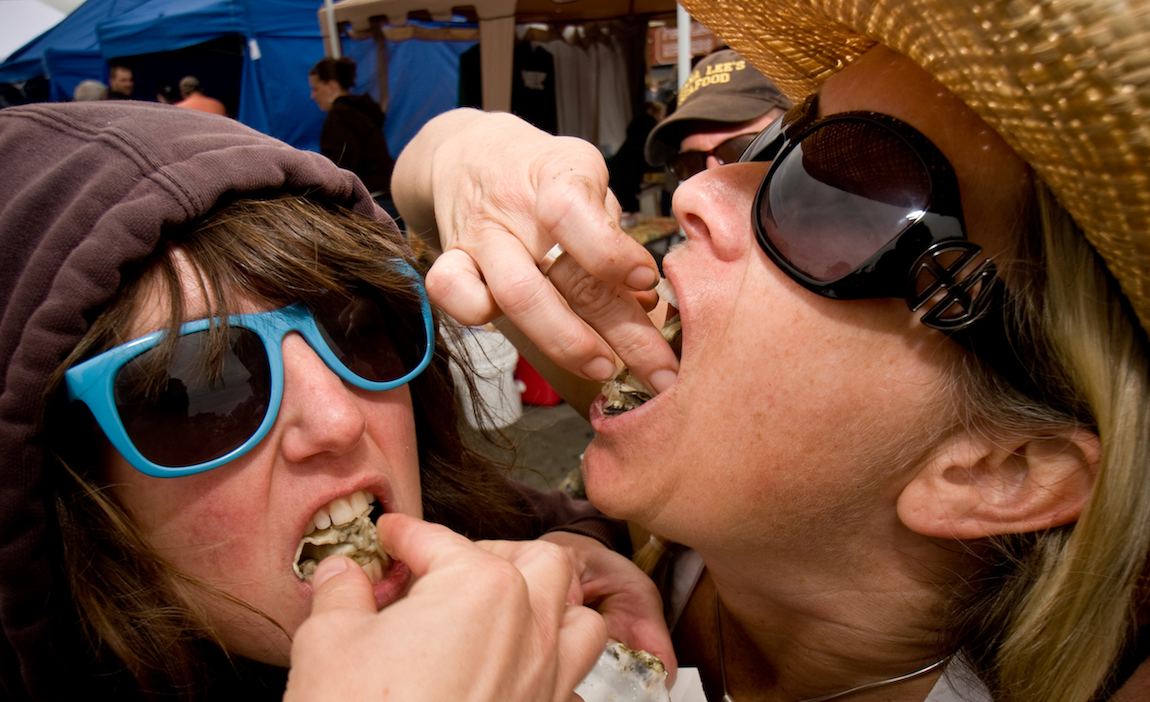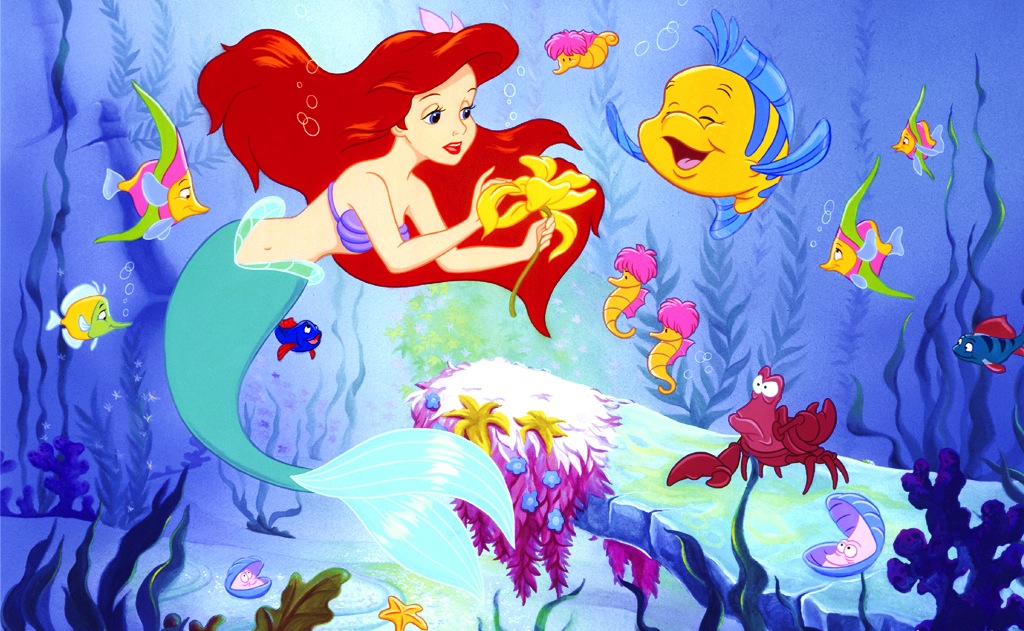The Bluffer’s Guide to Oysters
Everything oyster is illuminated in conversation with chef Sean Connolly.
When the conversation turns to acquired tastes, the oyster is a natural example; our first oyster is typically offered up by an uncle-type (who probably introduced you to beer a few years later) getting his Christmas kicks from watching the next generation squirm, and then we hit 25 and suddenly we're knocking them back.
But whether mum's reassurance that you'll like them you're older came true or not, many of us are still in the dark when it comes to this most lauded of mollusks. So we sat down with The Morrison Bar and Oyster Room's chef Sean Connolly to take the guesswork out of oyster culture.

Oyster basics
Let's start with some introductions: there are three different types of oysters grown in Australia: Sydney rock (or estuary), Pacific and Angasi. The last one, a rare goliath, is an Australian native that is attracting a lot of attention for its fleshy consistency — so oyster beginners should work up to this one. It can also command some pretty steep price tags, but according to Sean that isn't putting off the punters. "When you have Angasis [on the menu] they fly out the door."
These days most restaurants will at least offer you a choice between Sydney rock or Pacific oysters. Now the simplest way to think of these two is tastier versus creamier. That doesn’t quite cover the full spectrum of differences between them, but it’s a nice launching pad for developing your pallet. If you can, split your order between the two—it gives you an edge of sophistication, and will help you learn the differences.

Do you count as an oyster lover if you like toppings?
No.
Just kidding, the oyster community welcomes one and all, but maybe whisper your Kilpatrick (that's with cheese, Worcester sauce and bacon) requests. In Sean's mind it is simply about respecting the oyster, although he does seem pretty perturbed by oyster mornay (basically grilled cheese oysters). "That is the worst — haven't cooked one in years."

What should you be embarrassed to order?
Oyster lovers are undoubtedly a touch purist, but Sean insists "to a certain degree it's all good". If you are not quite ready to talk about the taste of the sea and how fresh shucking is paramount to good eating, just have a bit of fun. Order some of them deep-fried, use the juice for a dirty martini or pop an oyster in your shot glass. But remember, never the mornay. For the beer lovers amongst you, it could be time to head over to Young Henry’s Brewery in Newtown and check out their limited release oyster stout — Mother Shucka.

The do's and don'ts of oyster shucking
Nothing says host with the most like some freshly shucked oysters, so if you are ready to take home entertaining to the next level, buy yourself an oyster knife and get ready for a few cuts along the way.
First off, make sure you have a good base (read bread board) and do not attempt doing this in the air, in your hand, or anywhere else that momentarily seems logical. Make sure that the curved side is on the bottom, and hold it down with a tea towel-clad hand. Now, edge your oyster knife into the side of the oyster, then prize it open by running the knife along the join. Once you have traced the entire edge simply flex the knife sideways to move the shells apart.
"There is sort of like a 75 percent chance that you will hurt yourself," warns Sean. "Even I hurt myself shucking oysters at Christmas." I would probably add buy some protective gloves and download a how-to-guide.

How to eat an oyster
Discounting my childhood trauma theory, Sean doesn't see there being any real reason why people wouldn't like oysters — unless you're not eating them properly. So, here is his final word on how to eat an oyster: swirl it around your mouth, chew it twice and swallow.
It sounds like something Lauren Bacall would purr in To Have and Have Not ("You know how to eat an oyster, don't you Steve?"), so it is a handy piece of trivia for your next dinner date, and it means you are getting all of the flavour you can out of your oyster.

What to wash them down with
There is good reason that people are known to enjoy the finer things in life, not the finer thing; well-paired delicacies have a habit of making evenings memorable and this brings us to the wine match. Take your time with the wine list, you do not want to lose all that freshly shucked deliciousness in the depths of a juicy shiraz.
When matching wine to oysters some key words are minerality, acidity and flinty. I wouldn’t look further than something white and from Burgundy, but Sean points to a good savvy-b or dry riesling. Remember, if this is all new to you, grabbing the attention of your sommelier is always a good move and chucking in the word 'flinty' is sure to earn you bonus points.

The best places in Brisbane to enjoy oysters
Last weekend the South Bank Surf Club launched their oyster season with an all-you-can-eat event. We heard two girls managed to consume 13 dozen between them. That’s 78 oysters each! While all-you-can-eat might just be for the mad-keen oyster lover, those with a taste for classic seafood needn’t look far to find the good stuff. Pop in for half or full dozens on menus at The Jetty, Cabiria or Jellyfish. For variety, Bar Barossa in the city offer them natural, Kilpatrick, with grapefruit pearls, pedro Xienez jelly, spicy nahm jim or spanner mornay crab. Or visit the oyster man at West End markets every Saturday. Bring your gold coins, at $1 a pop these freshly shucked bad boys go down a treat for breakfast.

Do they really have an aphrodisiac effect?
The standard response to this question is a smirk and some nod to personal experience — the more erudite might even referenceCasanova’s breakfast — but a little research shows this theory has real legs.
First of all the high zinc content keeps all of us generally strong and virile, plus it staves off herpes (pop that in the good-to-know basket). But, the science really heats up when you start talking amino acids. These little critters actually house two pretty unusual ones (D-aspartic acid and N-methyl-D-aspartate) that have been shown to boost testosterone in men and women's oestrogen levels. Who knew? The Italians were right all along.

Do I need to know where they come from?
Waters are to oysters as soil is to wine, so regions can say a lot about what an oyster is going to look and taste like before it gets to the table. It's all a little too involved for this article, but oyster masterclasses are held regularly all around Sydney if you are keen to learn more.
But we can give you a few cheats: names to look out for include Coffin Bay (SA), Clyde River (NSW) and St Helens (TAS). Don’t be alarmed if your favourite restaurant starts offering you oysters from different regions; like most produce, the best oyster-producing region depends on the season. Ultimately, as Sean notes, it is about having "trust in the chef, trust in the establishment and then the proof is in the eating".

How do Aussie oyster lovers rate internationally?
We've had Europe lording it over us for years with their tails of natural sophistication, but Sean disagrees. "It's part of our culture," he insists in a broad Yorkshire accent — stopping to note that after 20 years in the country he has earned the right to say 'our'. It's marginally more than my years of life so I don’t fight him. Plus, he has a point; we have got some of the cleanest waters in the world for growing the things.
“When I opened Astra [his first restaurant], about 17 years ago," Sean goes on, "we were shucking oysters to order and the clientele were sending them back because they were salty … But now everyone recognises a good oyster and everyone is look for that taste of the sea."

By Ruby Lennon with Daniela Sunde-Brown.















